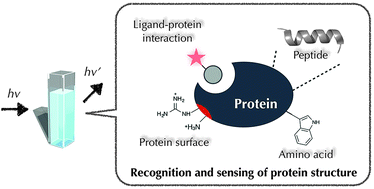Protein recognition using synthetic small-molecular binders toward optical protein sensing in vitro and in live cells
Abstract
Chemical sensing of amino acids, peptides, and proteins provides fruitful information to understand their biological functions, as well as to develop the medical and technological applications. To detect amino acids, peptides, and proteins in vitro and in vivo, vast kinds of chemical sensors including small synthetic binders/sensors, genetically-encoded fluorescent proteins and protein-based semisynthetic biosensors have been intensely investigated. This review deals with concepts, strategies, and applications of protein recognition and sensing using small synthetic binders/sensors, which are now actively studied but still in the early stage of investigation. The recognition strategies for peptides and proteins can be divided into three categories: (i) recognition of protein substructures, (ii) protein surface recognition, and (iii) protein sensing through protein–ligand interaction. Here, we overview representative examples of protein recognition and sensing, and discuss biological or diagnostic applications such as potent inhibitors/modulators of protein–protein interactions.

- This article is part of the themed collection: Sensor Targets

 Please wait while we load your content...
Please wait while we load your content...